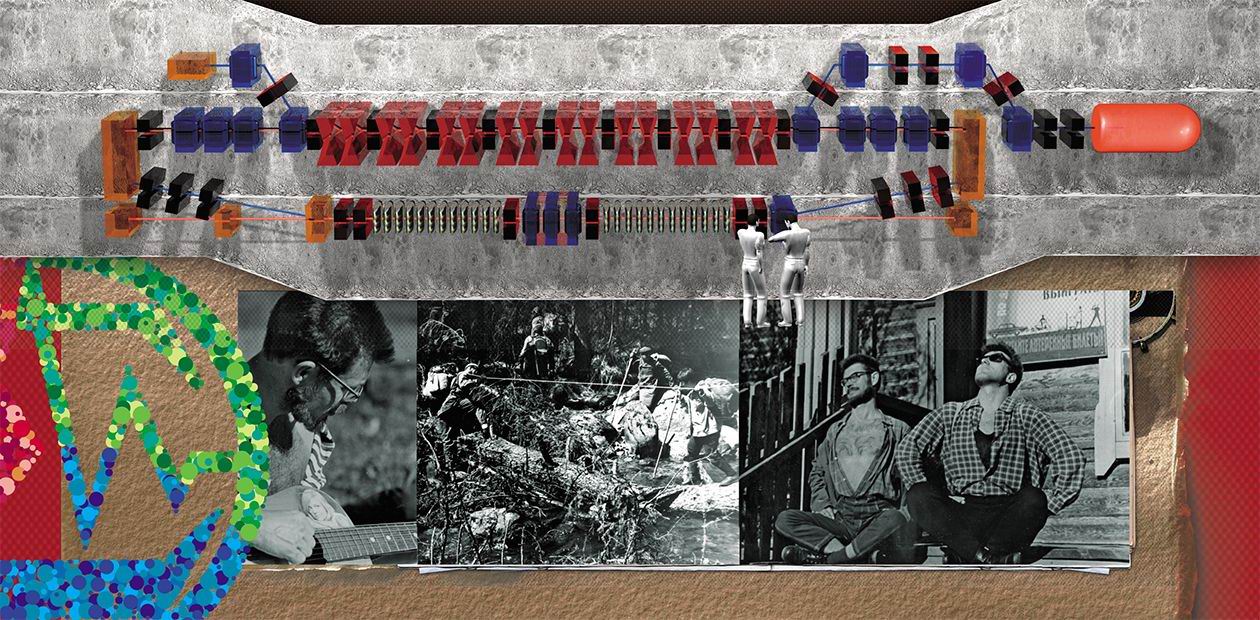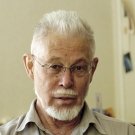Akademgorodok of the 1960s: “Fathers” and “Sons”
The establishment of the Siberian Branch of the USSR Academy of Sciences in the mid-1950s turned out to be one of the most successful projects in our country in the second half of the 20th century. The men who ventured into the multidisciplinary research center in the Siberian taiga were not born with a silver spoon in their mouths—the pioneers of Akademgorodok were most daring and enthusiastic scientists in their fifties. They arrived from all over the country, bringing a dozen gifted students each. The development of Akademgorodok went on, and five years later, the science center went through another phase of natural selection: the time had come for a new generation of scientists—the so-called Sixtiers, graduates of universities of Moscow and Siberian cities, who came here to become part of the amazing scientific families that had formed in this scientific center
In the Soviet era, Moscow sucked out, as it always did, talented people from the entire country – it took to itself the best scientists, artists, writers, sportsmen. Not a single talented person was left in the peripheral lands although these regions, especially Siberia, had always been to this country a great source of value. No wonder that back then everyone believed science did not exist beyond the Garden Ring.
However, three prominent scientists – Sergey A. Khristianovich, Mikhail A. Lavrentiev, and Sergey L. Sobolev – approached the Soviet government with an audacious project to establish in the Asian part of the Soviet Union a new branch of the USSR Academy of Sciences. The mighty triumvirate succeeded: only 12 years had passed since a most devastating war, but the Soviet government suddenly believed in Mikhail Lomonosov’s vision that “Russia’s power will grow with Siberia and the Northern Ocean.”
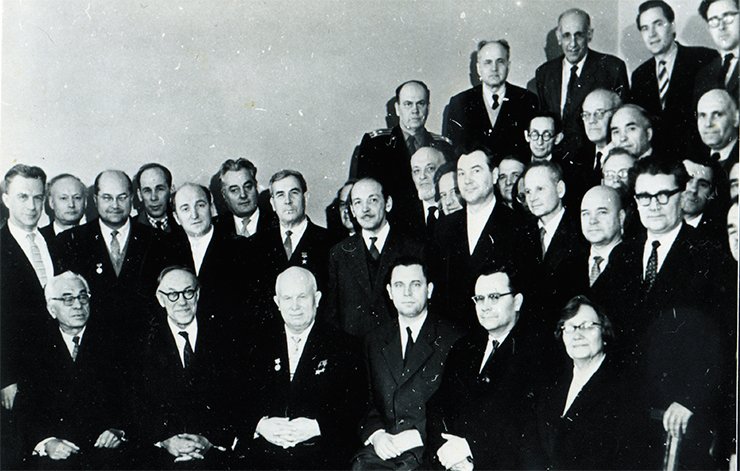
“But instead of breaking the bond, we can force it to vibrate vigorously, and in some cases, that will be enough. If we use a lot of quanta, we can selectively influence the processes. As a result, in 1985 we published a book Infrared Photochemistry, and I defended my doctor-of-science dissertation on this subject. Today, I am still choosing to do the impossible…”
In 1957, the government issued a resolution to establish the Siberian Branch of the USSR Academy of Sciences. This stupendous project attracted the most creative scientists (Professors, Full or Corresponding Members of the Academy of Sciences), who felt confined in capital cities, who had their own ideas and, most importantly, their own students. When they set out for Novosibirsk from Moscow, Leningrad, Kiev, Kharkov, Kazan, each of them took a small stable of their kids-in-science, ten to twenty years younger. These youngsters were given a free hand. And all of them, young and old, believed that “doing science meant doing the impossible.”
Still, the majority of researchers in the new science center belonged to the generation of the Sixtiers, who graduated from universities in the early 1960s, while the first graduates of Novosibirsk State University received their degrees in 1964. Take me, for example. I finished Kemerovo State University in 1961 and received an invitation to join the Institute of Organic Chemistry from its director, Nikolay N. Vorozhtsov himself, who then was a Corresponding Member of the Academy.
Our generation could be called the grandchildren-in-science of the pioneers. In science, the time period between generations is twice as short than in life, where the difference between “fathers” and “sons” is about twenty years. A candidate of science “grows up” within a decade; then he or she is ready to pass on their knowledge to a new generation.
Knee deep in kids
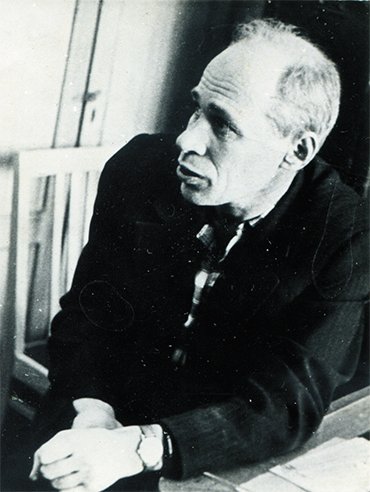 Only one epithet can best describe the relations between “fathers,” “sons,” and “grandsons” in the young Akademgorodok – these relations were amazing. Any parent who meets their first grandchild falls under the impression that they had devoted so little attention to their own kids that now they should make up for their neglect by caring for their grandchildren. So, we, the Sixtiers, enjoyed this full attention and care from the founding fathers, the first generation of Siberian scholars. In those very best years, we could easily approach any scientific savant, ask a question and get an answer. Everyone was available; there were no hierarchies. It was an invaluable experience not only for science but also for ethics, for human existence itself.
Only one epithet can best describe the relations between “fathers,” “sons,” and “grandsons” in the young Akademgorodok – these relations were amazing. Any parent who meets their first grandchild falls under the impression that they had devoted so little attention to their own kids that now they should make up for their neglect by caring for their grandchildren. So, we, the Sixtiers, enjoyed this full attention and care from the founding fathers, the first generation of Siberian scholars. In those very best years, we could easily approach any scientific savant, ask a question and get an answer. Everyone was available; there were no hierarchies. It was an invaluable experience not only for science but also for ethics, for human existence itself.
Mikhail Lavrentiev, Sergey Khristianovich, Vladislav Voevodsky and many others regularly held weekend scientific workshops at their cottages, always followed by a lunch or dinner. Everyone took part in molding Russian meat dumplings – pelmeni. This was also a way to feed the young scientists. The “fathers” lent us money when we needed it and then refused to take it back. They also organized kindergartens: one institute provided a three-room apartment; another one hired the nurses, purchased a fridge, made a playpen.
FEL: A GENTLE TOUCH OF THE LASERThe mass-spectrometry technique, now widely known, made a real revolution in chemistry. At present, a mass-spectrum can be recorded for any substance that can be transferred to the gas phase. The molecular weight of the substance can be determined from the parental peak of this spectrum, and its molecular structure can be obtained by the analysis of the mass spectra of fragments. The method was prevented from being used in biology not so much due to very large weights of biological macromolecules as due to the impossibility of transferring them to the gas phase.
Therefore, it would be extremely tempting for researchers to have at their disposal a method that would allow a “soft” (i. e., without destruction of an object) laser ablation of biological macromolecules, which could then be recorded in the form of gas-phase aerosol particles. This idea was implemented at our Siberian Center for Photochemical Research with the launch of the free-electron laser (FEL) developed at the Institute of Nuclear Physics (INP) of the Siberian Branch of the Russian Academy of Sciences.
The history of the center began in 1992, when Academician Skrinsky, director of the INP, invited all the interested parties to a traditional round-table discussion and told them about the project to create a FEL whose radiation could be smoothly tuned over wavelengths in the huge infra-red range from 2 to 200 microns (µm), which overlaps the range of vibrational and rotational spectra of almost all existing molecules.
By that time, our Laboratory of Laser Photochemistry had a 20-year experience in researching the reactivity of molecules excited vibrationally by monochromatic CO2-laser irradiation. Unfortunately, the laser generated radiation in the narrow range of wavelengths of about 10 µm; therefore, researchers had to select molecules vibrating in exactly that range. Obviously, a universal source of monochromatic radiation would make it possible to selectively influence any vibrations in any molecular systems. It was the time when no research was conducted in the specialized building of the Institute of Chemical Kinetics and Combustion housing a 50-meter accelerator hall protected by three-meter-thick concrete walls. That is when the idea emerged to create, on these premises, a shared center for fundamental and applied research in physics, chemistry, biology, and medicine.
Today, looking back on the past, we would like to sing a hymn to the heroic staff of the Institute of Nuclear Physics, who continued to work during hard times for the Russian science and invested an appreciable portion of their earnings in the creation of the free electron laser. Difficulties pulled us together.
On April 4, 2003, our Siberian laser produced the first generation of light with wavelength tuning in the range from 100 to 200 µm. This was the achievement we had been working towards for 10 years! The participants of the FEL launch organized an improvised celebration in the panel room and drank champagne right from the teacups…
When my family got a one-room apartment in Akademgorodok, the director of our institute Nikolay Vorozhtsov called on us himself to check how we were. He came in and saw our meager belongings – a cot, a stool, a box instead of a table – that was all. He brought me to his place, gave me a basin and cloth to tidy up my new home – I indeed had nothing to do it with – and then gave me 400 rubles to buy new furniture! By the way, when we later moved into a new apartment, I gave the furniture bought with Vorozhtsov’s money to my students, the first candidates of science that I raised. However, one stool, on three legs, I kept to myself, as a memory.
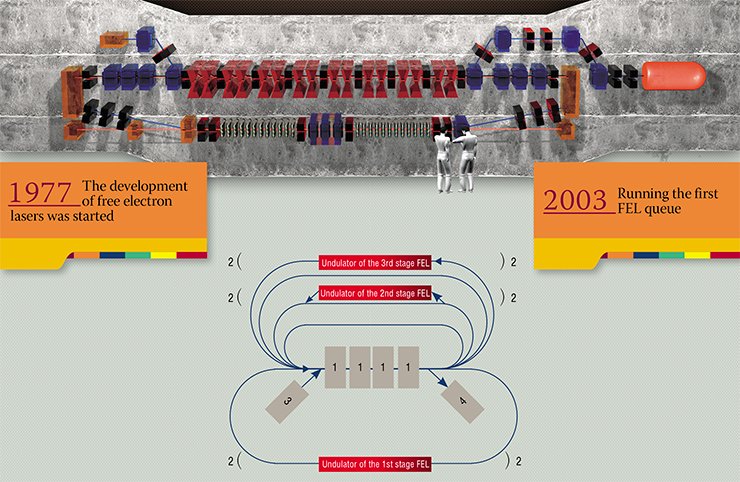
Every Thursday, Vorozhtsov would make a “tour” around the institute and talk personally to everyone, calling them always by their first name and patronymic. This way he could communicate throughout the year literally with everyone on staff. He would enter the room, stroke his beard and ask people about their work, salaries, living conditions, health. If anyone managed to do some interesting science, he would look closely at their work and say, “Look, that’s great, but no way that nobody has ever thought about that and made it.” In response to “I’ve ransacked all sources, sifted through all issues of the abstract journal,” he would advise, “Academician Nesmeyanov created the abstract journal in 1953, that’s too short a timespan for science. How about looking through Berichte [a German scientific journal] for the past century? Call on me if you find something.” And indeed, in 1895, some German professor described the same mechanism but only as an assumption, while I had proof. “Quote this author,” said Vorozhtsov, “and write an article. I will present it to Doklady Academy of Sciences.” And he would decline coauthorship, a totally unthinkable thing nowadays.
ON FAST ELECTRONSDevices that transform the energy of electrons moving almost at the velocity of light to the energy of electromagnetic radiation got the name free electron lasers (FELs). A universally recognized advantage of this device, which distinguishes it from other lasers, is the ability to obtain monochromatic radiation at any wavelength in an extremely wide range, from 0.1 nm to 1 mm. In this case, relatively fast switching of the laser from one wavelength to another in an interval of up to a few tens of percent is possible. The major application area of such facilities is investigations in the sphere of material science, chemistry, crystallography, solid-state physics, and molecular biology.
The process of radiating an electromagnetic wave by an electric charge can be presented as separation of a part of its electric field. This means that in empty space, only those charges that move with acceleration can radiate. For an electron to radiate, it must be made to move in a wave-like manner. Such motion can be caused, for instance, by a static electric or magnetic field.As early as 1947, the Soviet physicist V. L. Ginsburg proposed that a periodic field be used to enhance the radiation intensity of a fast charged particle, and calculated the parameters of such radiation. Later, a device called undulator was created. The undulator creates a periodic magnetic field to organize specific motion of electrons in a wavy trajectory along the longitudinal axis of the device. The resulting enhancement of electromagnetic radiation forms the basis for the operating of a free electron laser, which is an electromagnetic radiation amplifier.
The return of radiation from the amplifier output to its input can cause self-excitation of the amplifier, transforming it into a generator. In the case of a FEL, it is transformed to a generator with the help of an optical cavity, i. e. two mirrors located to the left and to the right of the undulator on its longitudinal axis. An electromagnetic wave circulates between the mirrors, intensifying each time it passes through the undulator. To compensate the diffraction divergence of radiation, the mirrors are often concave.
The development of free electron lasers was started by the Institute of Nuclear Physics SB RAS in 1977, when A. N. Skrinsky and N. A. Vinokurov proposed a FEL modification (an optical klystron), which considerably increased the device amplification in comparison to the classical scheme. While new FELs were being developed, a permanent magnet undulator with control of the magnetic field amplitude by changing of the gap was implemented for the first time in the world. Several years later, there emerged hybrid undulators on permanent magnets. Now, both the variable gap and the hybrid construction of undulators are universally accepted and used in all synchrotron radiation sources.
The original long undulator of the the optical klystron on the VEPP‑3 storage ring, which was made in 1988, was so good that it was used more than 20 years at Russian and US facilities. It allowed us to obtain radiation of a record short (for FELs) wavelength of 0.24 micron in the ultraviolet range and of an unprecedentedly narrow (10–6) spectrum. This record was not broken for over 10 years
Here is a telltale story about Academician Sergey Sobolev, one of the greatest mathematicians of the 20th century. In May 1972, we went on a hike to the Fann Mountains in Tajikistan. In a remote kishlak, we asked to stay overnight in a local school. A young lad came in, Sergey Sanginov, a son of the schoolmaster and a student at the Pedagogical Institute in Dushanbe. When he found out where we were from, he asked if we knew Sobolev. I told him that in summer I regularly met Sobolev in the street in the morning when I took a run to the beach. The boy said, “I’m a mathematician, and I really need his book, but there’s nowhere I can find it. Could you ask him for his book?” Two weeks after I came back home, I met Sobolev and told him this story. He laughed and said that he would certainly help that Tajik boy, who happened to have the same name as himself. He invited me to his house, climbed up a ladder – he had bookshelves rising from the floor to the ceiling – pulled out the book and asked me to send his regards to Sergey. The book reached its destination, and I received a thank-you letter with a photograph.
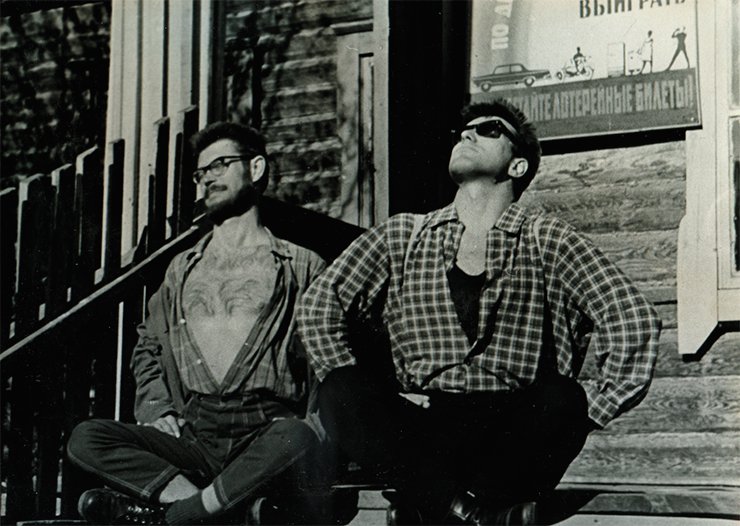
In 1974, me and an NSU student Natasha Rubtsova (now a doctor of physics and mathematics) measured the temperature distribution in a cell filled with gas under the action of CO2-laser light and discovered clear signs of convection. I decided to look deeper into this issue, took a book by Samson Kutateladze. But I found no answer in that book. Fortunately, me and him lived in the same apartment building, took out the garbage together, exchanged newspapers. Kutateladze invited me to his place, looked through our results and said that it was all very interesting but nobody could describe convection yet. Just imagine: such a savant in thermal physics as Kutateladze was not ashamed to admit that he did not know something!
I should add that in those days, virtually all of our Academicians regularly published articles in the newspaper Za nauku v Sibiri (‘Science in Siberia’). They committed themselves to science popular style, displaying the full scope of their talent.
Science reigned over it all. We worked from 9 a. m. to 9 p. m., sometimes till morning, but one needed a permission for that. Back then, there was not such thing as grant support programs for scientists, and we worked for very little money. As a senior laboratory assistant, I earned a salary of 83 rubles per month; after a year, I got promoted to an engineer with a salary of 105 rubles; only when I got the position of a researcher, I began to earn 120 rubles per month. When I visited my home city of Kemerovo and met with my classmates, they would wonder, “Petrov, how do you live on this money? I work as a machine operator at a chemical plant and earn three times as much. And you were among the top students in our class.” I would retort, “You will work on the same machine all your life and earn the same salary. That’s not for me. I’m doing what interests me. Moreover, I know that I have prospects in my job.” I knew exactly what my life would be if I went on working, and I was right.
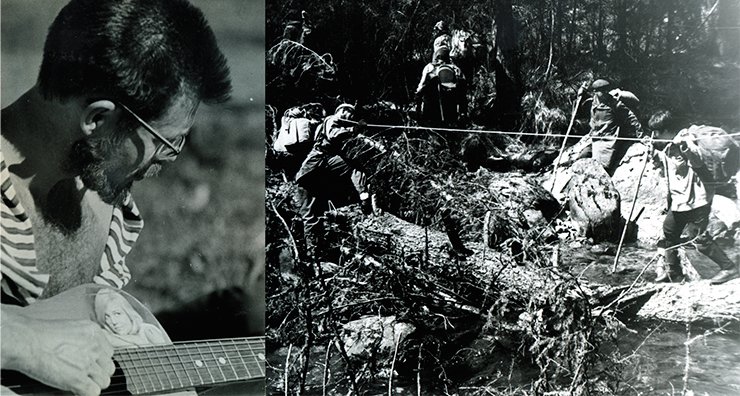
In those days, we thought about Akademgorodok as our property and responsibility: we built, with our own hands, sports grounds, basketball courts, tennis courts. We also spent our vacations not like other people. We didn’t go to summer resorts or recreational facilities; instead, we went on hikes – mountaineering, rafting, skiing. We booked whole cars on trains heading to Biysk and Leninogorsk. In the 1970s, I was for three years the chairman of the hiking route assessment board for Akademgorodok and know for certain that 90 % of all the registered hikers in Novosibirsk, a city with over a million residents, lived in the small Akademgorodok. My old friend and a dedicated hiker Academician Dmitry Knorre, who recently celebrated his 90th birthday, always asks me, even these days, when we come together: “Sasha, play the guitar for us.”
When we went on long hikes, we arranged ourselves ingenious letters on an institute letterhead. The letters read roughly as follows: “To the Head of the Air Detachment at Lake Sobachye. The institute requests the assistance for a group of researchers… Nikolay N. Vorozhtsov, Director of the Institute of Organic Chemistry, Siberian Branch, USSR Academy of Sciences, Corresponding Member of the USSR Academy of Sciences.” Vorozhtsov was greatly amused each time he signed those letters and asked us to send him telegrams when our hike was over. The letters always worked: we got a helicopter or a car, for money, of course. But then, all of a sudden, our papers lost their power. The reason was, as it turned out, that Vorozhtsov got promoted to an Academician while the rank of Corresponding Member looked much more formidable in the eyes of local bosses. We began to write “Corresponding Member” again; Vorozhtsov roared with laughter but signed the letters
Why was our Academy of Sciences so popular in the times of the Soviet Union? The reason is that it brought together the smartest people, who had done a lot for the nation and became Academicians because of real discoveries and achievements. In those times, it was a generally accepted practice that all important national programs must get a “blessing” of science: the Academy bore a status of a major expert and a key actor of progress.
In the mid-twentieth century, the Soviet economy produced no fertilizers, no plastics, not even pharmaceuticals. We purchased all that for “staple product,” quoting Alexander Pushkin, i. e., for wood, oil, gas. In 1956, the USSR leadership announced a national chemization program. And who became the head of the Academy of Sciences? Of course, Academician Nesmeyanov, a born chemist. By the way, it was him who designed the first synthetic food and even contributed to selling to the Americans a license for the production of artificial black caviar. Although Nesmeyanov himself was not involved in the chemization program, he knew what task to assign to which institute. After a decade, we became a totally different country with our own fertilizers, plastics, caprons, nylons, etc.
When the conquest of space rose to the top of the agenda, Academician Mstislav Keldysh, a major expert in applied mathematics and mechanics and one of the ideologists of the Soviet Space Program, became the head of the Academy. You know the result. Our achievements in chemistry did not surprise anyone: we simply caught up with the West, but we did spurt into the lead in conquering outer space.
When the leadership announced an atomization program, the country soon had a widespread network of nuclear power plants; we were the first to make a nuclear icebreaker, nuclear submarines. Again, one of the organizer of the atomic industry, an atomic physicist Anatoly Alexandrov, a right-hand man of Igor Kurchatov, became, in 1975, President of the USSR Academy of Sciences.
Then we moved into the unforgettable 1990s, and global projects were relegated to a back burner. Now we have import substitution on the agenda. Is it not a good task for the country and the Academy of Sciences, considering that the number of its members has grown severalfold over the past half-century?
References
Agafonov A. V., Lebedev A. N. Free electron lasers. Moscow: Znanie, 1987.
Petrov A. K. FEL: A Gentle Touch of the Laser // SCIENCE First Hand. 2006. V. 9. N. 4. P. 20—25.
Vinokurov N. A. On Fast Electrons // SCIENCE First Hand. 2010. V. 27. N. 3. С. 6—13.


